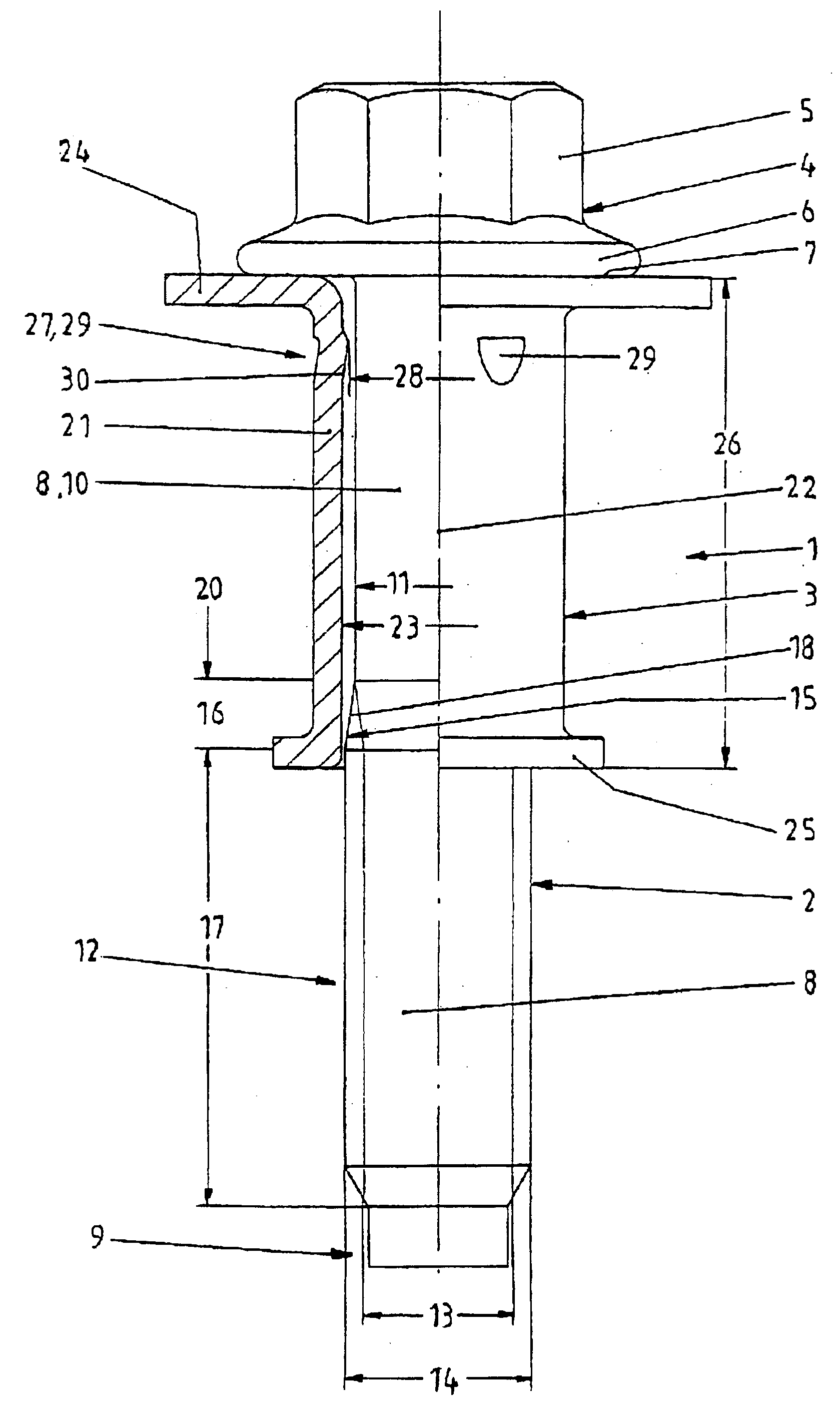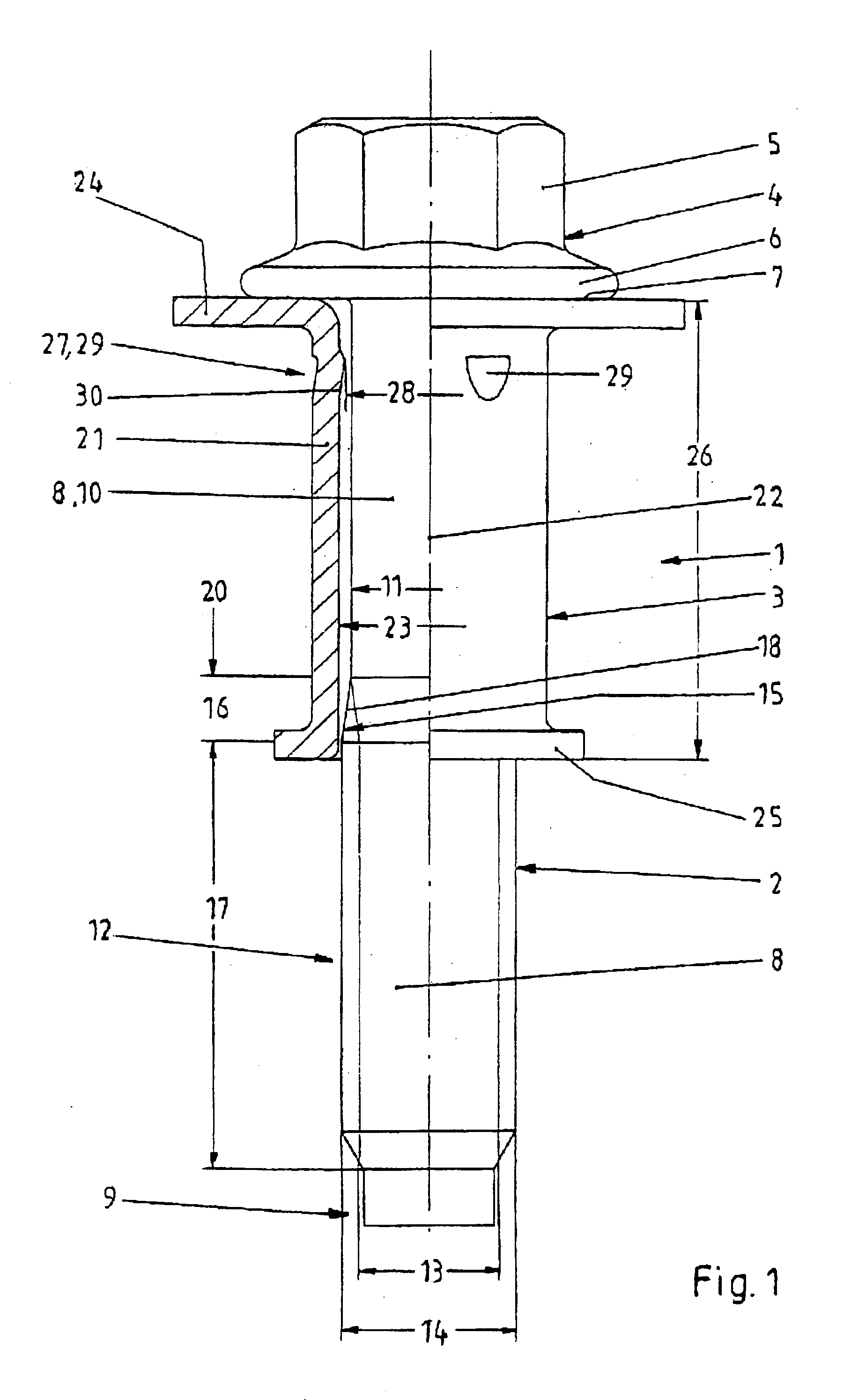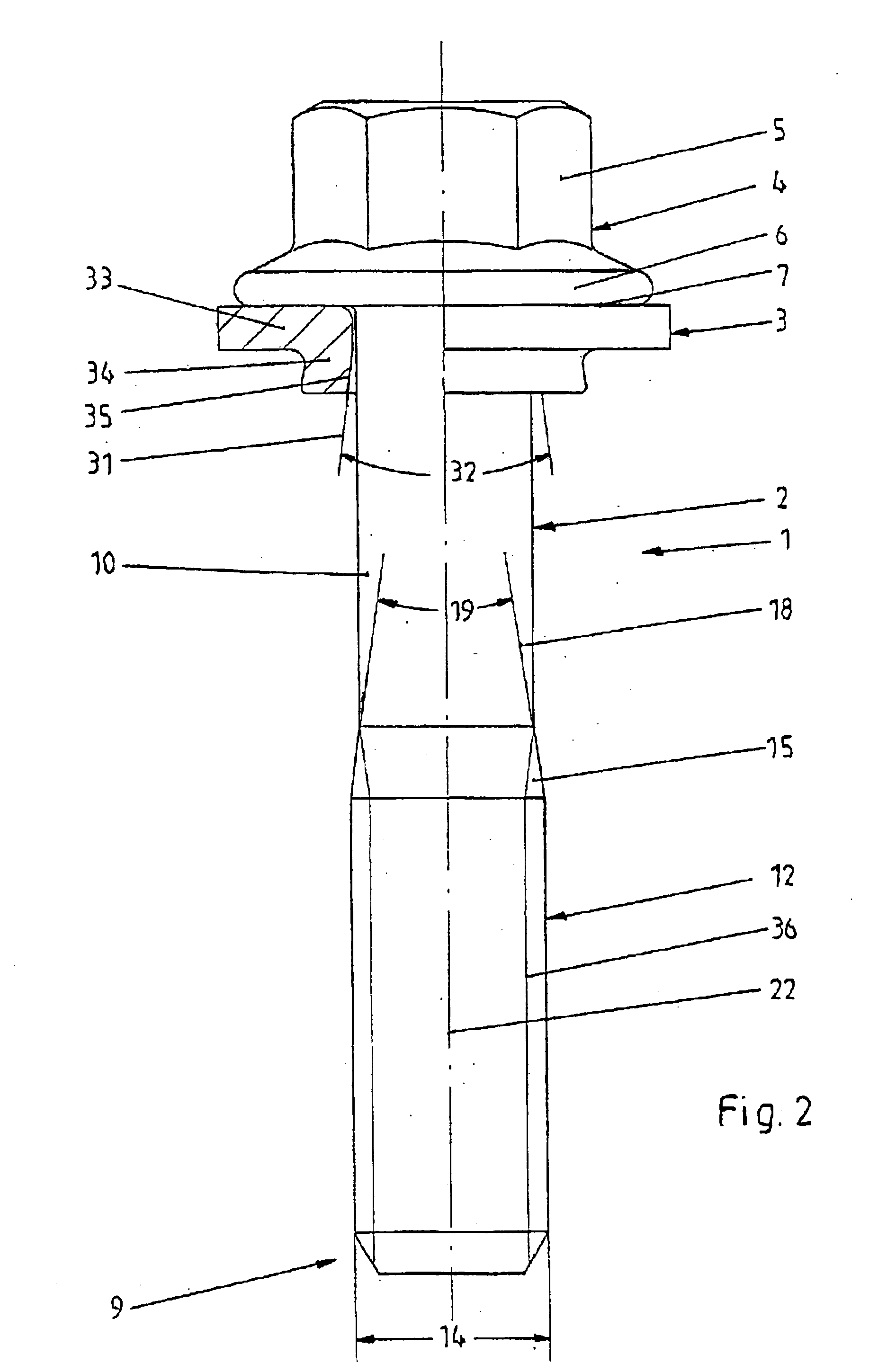Fastener including a screw and a supporting element
a technology of supporting elements and fasteners, which is applied in the direction of screws, fastening means, pins, etc., can solve the problems of not being able to be properly mounted in the assembly station, the risk of the supporting element being clamped in the thread runout region, and the inability to produce in an economic way
- Summary
- Abstract
- Description
- Claims
- Application Information
AI Technical Summary
Benefits of technology
Problems solved by technology
Method used
Image
Examples
Embodiment Construction
Referring now in greater detail to the drawings, FIG. 1 illustrates a first exemplary of the novel fastener 1. The fastener 1 or fastener assembly includes two or more components. Especially, it includes a screw 2 and a supporting element 3.
In the illustrated exemplary embodiment of the novel fastener 1, the screw 2 is designed as a collar screw. However, it may also have a different design. The screw 2 includes a head 4 including an engagement surface 5 for a torsional tool for operating the screw and a collar 6 including a supporting surface 7 serving to transmit an axial force onto a component (not illustrated). A shank 8 extends from the head 4 and from its supporting surface 7, respectively, to the free end 9 of the screw 2. The shank 8 in the region of the free end 9 may include a centering portion. The shank 8 at its side facing the head 4 includes a shank portion 10 having a diameter 11 which is less or smaller than the diameter of a thread to be described herein below.
A thr...
PUM
 Login to View More
Login to View More Abstract
Description
Claims
Application Information
 Login to View More
Login to View More - R&D
- Intellectual Property
- Life Sciences
- Materials
- Tech Scout
- Unparalleled Data Quality
- Higher Quality Content
- 60% Fewer Hallucinations
Browse by: Latest US Patents, China's latest patents, Technical Efficacy Thesaurus, Application Domain, Technology Topic, Popular Technical Reports.
© 2025 PatSnap. All rights reserved.Legal|Privacy policy|Modern Slavery Act Transparency Statement|Sitemap|About US| Contact US: help@patsnap.com



